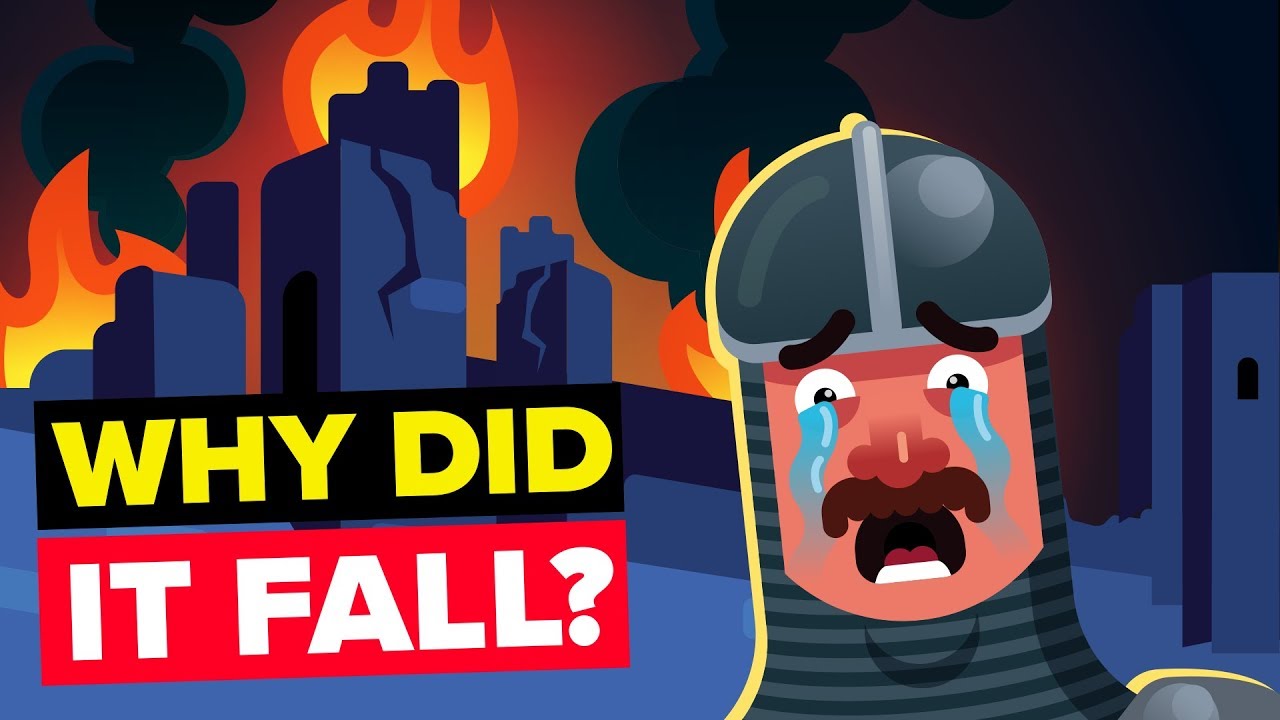The Fall of Constantinople

How exactly did the Roman Empire come to an end?
Well, in today’s animated educational cartoon we are looking at how the Byzantine Empire overtook the incredible Constantinople as their new capital city, making the final nail in the coffin for the Roman Empire.
What was the reason behind the decline of the Byzantine Empire before the Fall of Constantinople?
The Fall of Constantinople – One of the Most Significant Events in World History
The Fall of Constantinople is one of the most significant events in world history. This event marks the end of one of the world’s most powerful and longest-lasting empires. The siege of Constantinople started on April 6, 1453, and ended on May 29 of the same year. The event was the result of the Ottoman Empire’s conquest of the Byzantine Empire.
Background
The Byzantine Empire was the continuation of the Eastern Roman Empire, which had its capital at Constantinople, now known as Istanbul. The empire had existed for almost a thousand years before its fall in 1453. The empire was weakened by a long period of decline, and by the 15th century, the Byzantine Empire was in a dire situation. The empire had lost its power and was struggling to defend itself against the Ottoman Empire.
The Ottoman Empire was established in 1299 and rapidly expanded its territory under the leadership of Sultan Mehmed II, who became the empire’s first Ottoman emperor at the age of 19. In 1453, he decided to attack Constantinople with his army and navy, determined to conquer the city and establish the Ottoman Empire as the dominant power in the region.
The Siege
The Ottoman army began its attack on Constantinople on April 6, 1453. The city was heavily fortified, and the Ottomans faced a fierce resistance from the Byzantine defenders led by Emperor Constantine XI, who urged his men to fight bravely to the end.
The Ottomans, however, were determined and patient. They had a powerful navy to block off the city from its supply lines and a massive army to surround the city. The Ottomans employed several tactics, including digging tunnels under the walls of the city, using massive cannons to breach the walls, and launching massive assaults from different directions.
The Byzantine defenders managed to hold out for a long time, but the sheer size and power of the Ottoman army eventually overwhelmed them. On May 29, the Ottomans launched a massive assault on the city, and Constantinople finally fell. The siege had lasted for 53 days, and the Byzantine Empire was no more.
Consequences
The Fall of Constantinople had significant political, cultural, and economic consequences. The Ottomans had conquered one of the world’s most powerful empires, and they established their rule over the lands previously controlled by the Byzantine Empire. The Ottoman Empire became one of the most powerful empires in the world, and it would remain so for centuries.
The fall of Constantinople also had cultural and religious repercussions. The city was a center of Eastern Orthodox Christianity and had been for centuries. Its fall to the Muslim Ottomans was a significant blow to the Christian world. The event also played a role in the start of the Protestant Reformation in the 16th century, as it contributed to the growing tension between the Catholic Church and the Eastern Orthodox Church.
Final Thoughts
The Fall of Constantinople is an event that deserves to be remembered for its historical significance. It marked the end of one of the world’s most powerful empires and the beginning of a new era in world history. The legacy of the Byzantine Empire lives on today through its art, architecture, and culture, which have influenced and inspired people for centuries.









Prince William Doesn’t Wear A Wedding Ring And Here’s Why
Taking my Lamborghini Urus to CarMax! They Offered This…
10 Female Celebs Who AREN’T Feminists
Save MAJOR Gas Money
10 Things Kylie Jenner Taught Us Over The Years